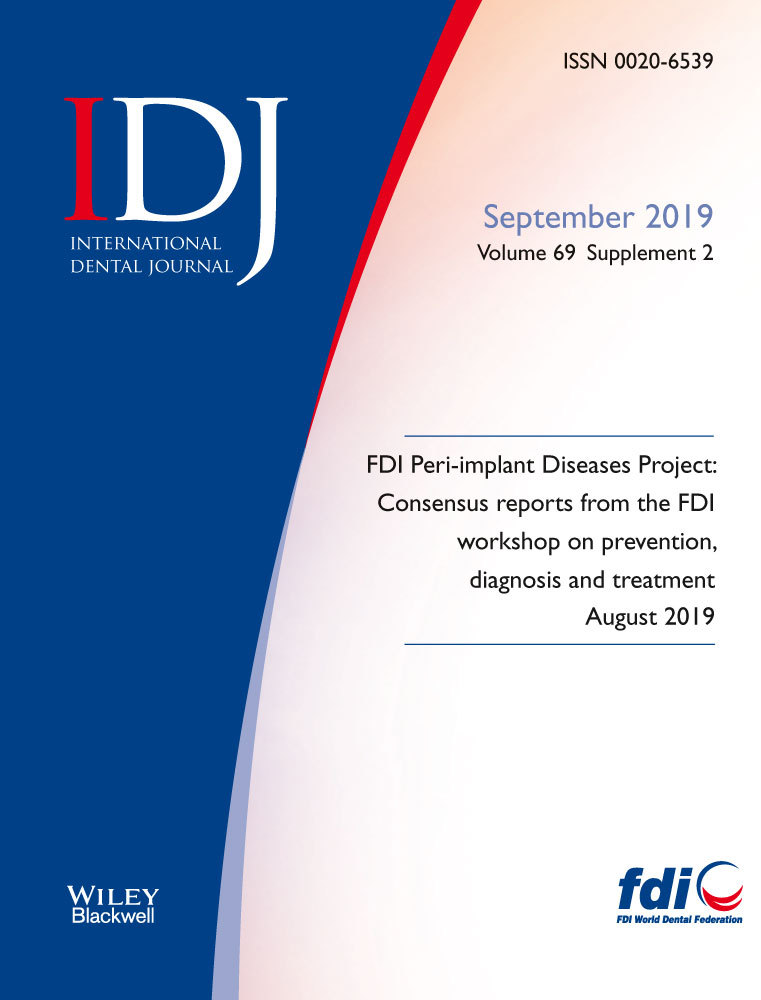Defined clinical entities: implant complications
The introduction of osseointegrated dental implants has changed the practice of dentistry, providing solutions to a wide range of clinical problems that were previously managed with less than ideal approaches. The clinical success of osseointegrated implants has been thoroughly documented, with survival rates at 5 years of better than 90%.
Nevertheless, with the widespread use of dental implants across the globe, complications occur, and this supplement to the International Dental Journal addresses the range of considerations when treating patients who have developed implant-related complications. The topics include diagnosis of peri-implant mucositis and peri-implantitis, local and systemic risk factors, and the management of these conditions, including non-surgical and surgical approaches. Note that these four summary papers1-4 have been distilled from a series of review papers that have been published in Implant Dentistry, following a consensus conference held in May 2018.
The four summary papers in this supplement provide a state-of-the-clinical science review of what still is an emerging issue in clinical dentistry, that is implant-related complications. The wide range in the reported prevalence of both peri-implant mucositis (19%–65%) and peri-implantitis (1%–47%) illustrates the uncertainty as to how often complications occur. These discrepancies relate to both different populations and different diagnostic criteria. The most recent consensus conference on the classification of periodontal and peri-implant disease should help clarify this uncertainty5, 6.
There is also no agreement regarding the influence of implant design and surface on the risk for implant complications. Identification of design specifics associated with reduced risk of implant complications would be an important advance.
Regarding systemic risk factors for implant complications, certain risks have been identified, including smoking, bisphosphonate therapy, use of selective serotonin reuptake inhibitors, and excessive alcohol intake. The question for clinicians is when to avoid implant therapy when one or more of these risk factors are present?
When peri-implantitis has progressed to the point that surgical intervention is considered, no one approach to decontamination is considered superior. The need to develop improved decontamination techniques is imperative, with substantivity a critical factor.
Some conclusions can be drawn from these four summary papers:
- Dental implants are a very successful, truly transformative treatment for partial or complete edentulism, with a high degree of success.
- As in all clinical treatments, complications occur. Management of complications will become a more significant problem as use of implants continues to expand.
- There are several established risk factors for implant complications, and these should be carefully considered during the treatment planning phase.
- The treating clinician must try to reduce the influence of risk factors on the clinical outcome by controlling variables when possible (i.e. prior treatment of periodontitis when present about other teeth in the mouth, introduction of smoking cessation programmes for patients who smoke).
- The local environment must also be a focus for the treating clinician. This includes more than the choice of the proper implant, but creation of an ideal restorative environment that allows for self-cleaning, removal of any excess cement if that is used to lute the restoration to the implant, development of an ideal soft tissue environment without a mucosal defect, as well as elimination of any periodontal or endodontic infection in the immediate area.
- Patients should be informed when risk factors are present that cannot be modified, and that certain unknown risk factors may lead to the development of peri-implantitis/implant complications.
- The chance of complications can be reduced when patients adhere to a strict oral hygiene regimen. Complications can also be reduced if patients are seen regularly for maintenance visits, suggested as no less than twice yearly.
These four summary papers provide the interested reader with a brief overview of this expanding area of clinical practice. For more detailed information, the original position papers should be consulted.




